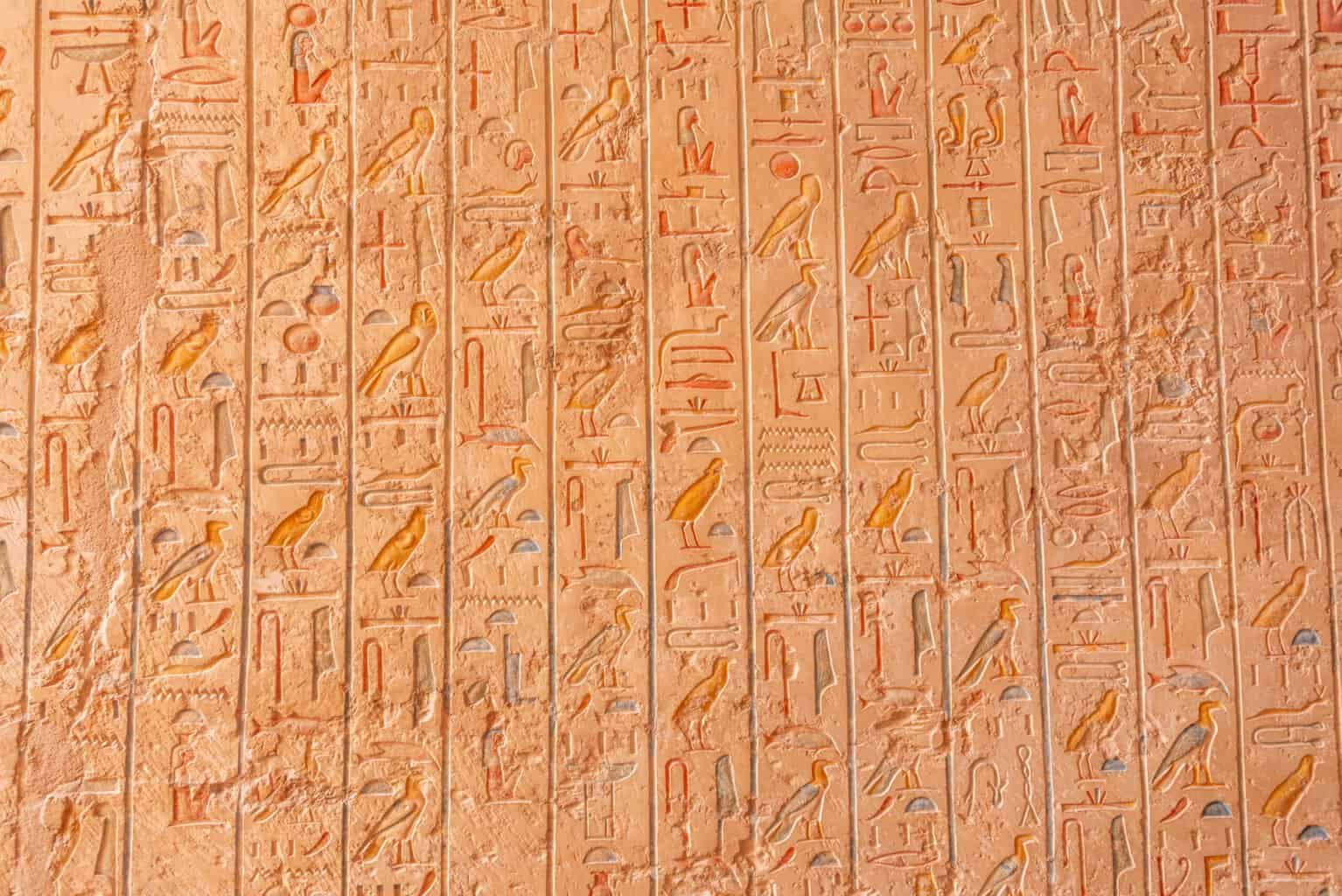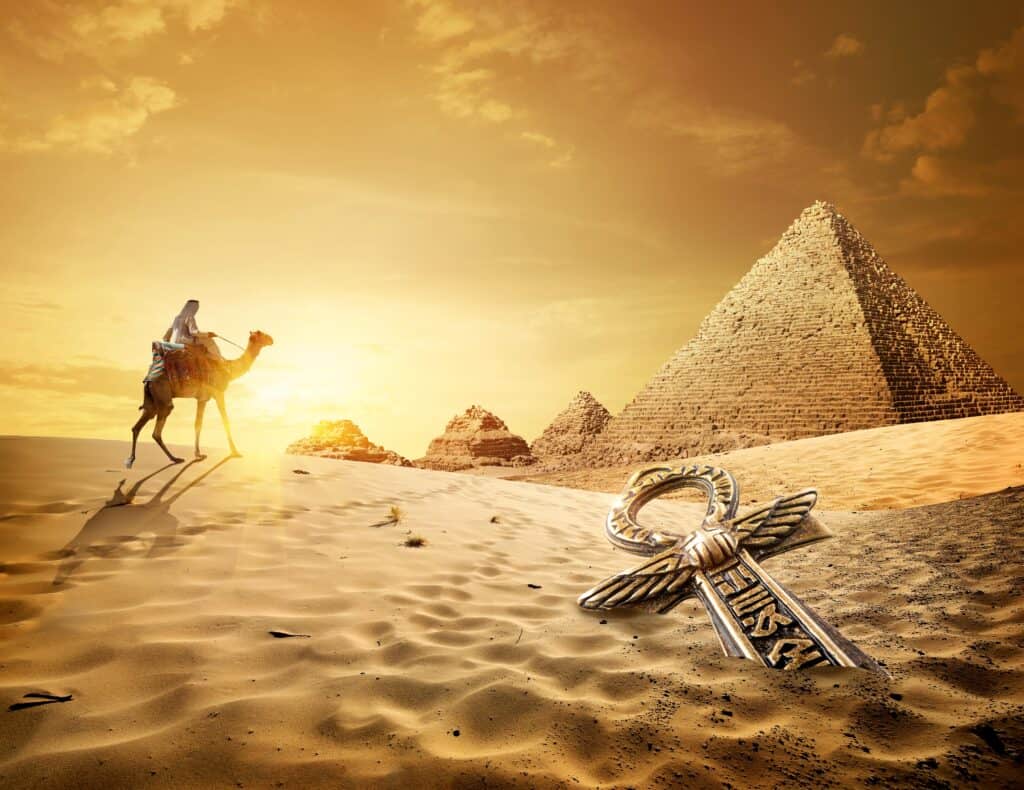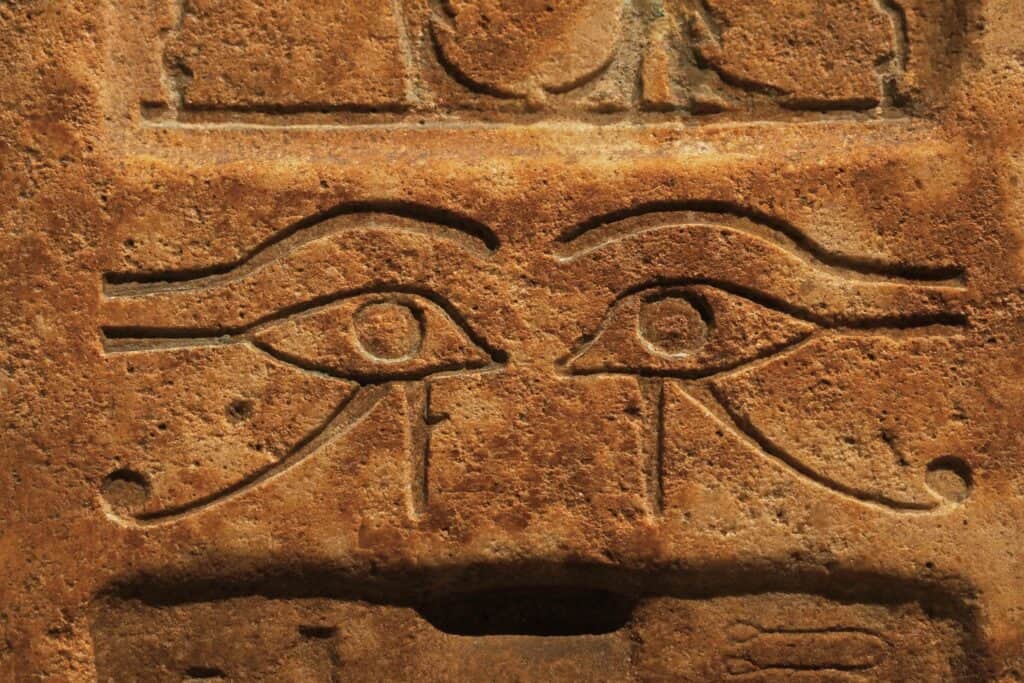18 Incredible Ancient Egyptian Symbols And Their Meanings

Updated On: April 23, 2024 by Miranne Khaled
Throughout the centuries, humankind has kept unmasking the mysteries and enchantment of the ancient world. Definitely, plenty of ancient civilisations have gifted our modern world with profound creations and inventions that remain as sturdy today. Among the world’s most potent civilisations was the ancient Egyptian culture.
Ancient Egypt was laden with fascinating wonders, becoming one of the most influential ancient cultures of all time. Egyptians were known for their sharp minds and their deep passion for life, managing to keep their beliefs and notions alive to this day. We clearly witness their vehemence for everything around them through the ancient Egyptian symbols found within the boundaries of the Great Pyramids, temples, and monuments.
Being on here clearly indicates your interest in revealing the secrets of a bygone era and understanding the meanings of ancient Egyptian symbols. So, journey with us through this exciting compilation and let’s immerse ourselves in the riddles of the past. It’s time to unlock the enigmas that have puzzled the world for so long.
1. Ankh (Key of the Nile) – Symbol of Life and Immortality

Ankh is one of the most prominent ancient Egyptian symbols found on temple walls and other iconic monuments. It has the shape of a key with a loop on the top, representing life and immortality. Egyptians often refer to it as the Key of the Nile and, sometimes, the Key of Life. This Egyptian symbol is still used in Egypt today, crafting keychains and other objects.
2. Wadjet Eye or Eye of Horus – Symbol of Protection and Health

The Wadjet Eye was more commonly known as the Eye of Horus, one of the most prevalent deities in ancient Egypt. This ancient Egyptian symbol was believed to have had healing properties; it was also used in measuring ingredients used for medicine preparation to anticipate effective cures. On a side note, this symbol was the inspiration behind the Eye of Providence we see today in US dollars.
3. Eye of Ra – Symbol of the Sun

According to Egyptian mythology, Ra was one of the eminent Egyptian gods, more precisely, the God of the Sun. It was one of the significant ancient Egyptian symbols, representing the sun. Although it may seem similar to the Eye of Horus, each symbol has the amulet facing a different direction. This similarity had once confused people and sparked a debate, where people believed the Eye of Ra is also the right eye of Horus.
4. Sensen (Lotus Flower) – the Symbol of the Sun and Rebirth
Rebirth and resurrection have always been significant parts of the belief system in ancient Egypt. For that reason, the lotus flower became a major ancient Egyptian symbol, as it naturally represents these concepts. The ancient Egyptians used the lotus flower symbol to depict both the sun and rebirth. That’s because the beautiful plant closes and goes below the water at night only to rise again at dawn and bloom, just like the sun.
5. Uraeus – the Symbol of the Power of Gods and Pharaohs
Snakes or serpents had always been part of the ancient Egyptian symbols. They were also used to represent the divine powers of gods and pharaohs that people in ancient Egypt believed in. Uraeus was yet another ancient Egyptian symbol that rulers wore on headdresses to signify supreme power.
6. Djed Pillar – Symbol of Strength and Stability
The Djed Pillar represented stability in ancient Egypt. It was one of the ancient Egyptian symbols that got associated with different gods over time, yet its core meaning remained unchanged. This pillar symbol was first associated with Ptah, the God of Creation. Still, later it became associated with Osiris, the God of the Underworld, becoming known as “the Backbone of Osiris”. Those who followed Osiris as their God believed that the spine was essential in keeping Osiris stable and standing strong.
7. The Canopic Jars – Symbol of Mummification
Egyptians were the first ancient culture to succeed in mummifying their dead, hence their firm belief in the afterlife. Mummification had always been an iconic method for ancient Egyptians; no wonder it became one of the most significant ancient Egyptian symbols in the form of canopic jars. These jars represent protection and the continuation of living for the deceased, and they’ve always been associated with the mummification and burial processes.
8. Primordial Hill – Symbol of the Process of Creation
The primordial hill symbol is one of the most ancient Egyptian symbols seen in many inscriptions and temple walls. According to the ancient Egyptians, these little hills were representations of the process of creation. They believed that everything came into creation in a specific order, hence the symbol. Some also believe that this ancient Egyptian symbol was the inspiration behind building the Great Pyramids of Giza.
9. Scarab (The Beetle) – Symbol of Transformation
The ancient Egyptians put too much thought into life, death, and resurrection. They also looked for signs around them to confirm their beliefs, and the dung beetle was the star of their resurrection theory. This beetle was one of the ancient Egyptian symbols that represented transformation, given its rolling process through which it lays its eggs.
In many cases, the beetle was also a symbol of protection; where all ancient Egyptians wore it to ward off evil spirits and guide them in the afterlife. It’s commonly known as Scarab, derived from the Latin word, Scarabeus, which means beetle.
10. Tiet/Tyet (the Knot of Isis) – Symbol of Feminism
Tiet or Tyet is one of the most significant ancient Egyptian symbols that represented one of the prominent Goddesses in ancient Egypt, Isis, and it was also commonly known as the Knot of Isis or the Blood of Isis. It represented the power of feminism and its significance to the continuation of life. The term’ Blood of Isis” emerged to mirror the menstrual cycle and the fertility process of females. Although the symbol is remarkably similar to the Ankh symbol in depiction, they represent utterly different concepts.
11. Ouroboros – Symbol of the Cycle of Life and Rebirth
Ouroboros is another ancient Egyptian symbol depicting a serpent swallowing its own tail, forming a circle representing that cycle of life and rebirth. The ancient Egyptians were firm believers of rebirth and new beginnings, which explains their all-time fascinating mummification process that kept their bodies intact for the next life. The Ouroboros symbol was then adopted by other cultures, like the Phoenicians and the Greeks, and they were the ones to give that ancient Egyptian symbol its name, the Ouroboros.
12. Seba – Symbol of Star-Gods
Seba was the term used by ancient Egyptians for stars. It became another significant ancient Egyptian symbol that is seen in many of Egypt’s ancient writings to this day. Although it may seem a bit like a starfish, this symbol represented the Egyptians’ pride in learning about the constellation and teaching the world. Later, the symbol became associated with Osiris, and the followers of that God would use it to showcase their beliefs.
13. Amenta – Symbol of the Land of the Dead
The Amenta symbol portrays the horizon where the sun sets, and it was all about the sunset for some time. However, later the Egyptian symbol was used to represent the land of the dead in ancient Egypt. It became one of the most significant ancient Egyptian symbols, depicting the western bank of the Nile River, the spot where people in ancient Egypt used to bury their dead.
14. Papyrus Symbol
Well, this one is pretty easy as the papyrus was a prominent plant used in ancient Egypt to craft a myriad of objects used in their daily lives. The most superior product made by the papyrus plant was the renowned Papyrus sheet, creating one of the most significant ancient Egyptian inventions of all time. Thus, it’s understandable that it became among the important ancient Egyptian symbols, primarily because it was known for its durability against water damage, paving the way for manufacturing more objects.
15. Ma’at Feather – Symbol of Truth

The feather of Ma’at was one of the ancient Egyptian symbols frequently used on walls of temples and monuments and inside burials in the past. Ma’at was the Goddess of justice and truth in ancient Egypt, and the feature depicted the writing pen used to ensure the truth was always written.
16. Deshert (Red Crown Symbol) – the Symbol of Lower Egypt
Crowns were significant parts used in ancient Egyptian symbols, with each crown representing part of the Egyptian lands ruled by a specific Pharaoh. The red crown symbol was commonly known as Deshert, and it was used to represent Lower Egypt. Those lands in that part of Egypt were believed to be owned by Goddess Wadjet.
17. Hedjet (White Crown) – Symbol of the Kingdom of Upper Egypt
While the red crown represented Lower Egypt, the white one was used to represent Upper Egypt and was known as Hedjet. It was the other major royal crown and was one of the frequently used ancient Egyptian symbols before the two kingdoms of Egypt were united under the rule of one Pharaoh.
18. Psechent (Double Crown) – Symbol of the Unity of Egypt
Egypt was once divided into Lower Egypt and Upper Egypt, with each kingdom ruled by a different king. However, Narmer/Menes was deemed the first Pharaoh to unite the two kingdoms, after which the Psechent, the double crown symbol, emerged, becoming among the most significant ancient Egyptian symbols.
Today, the ancient Egyptian symbols are fully deciphered and became unveiled to the world. It has always captured the attention of history buffs and ancient world enthusiasts’ attention. If these symbols of the past have intrigued you, you’ll definitely want to explore the imposing ancient Egyptian inventions that stood the test of time.
For more ancient Egyptian history, be sure to check out this article Tomb of Queen Nefertari.






